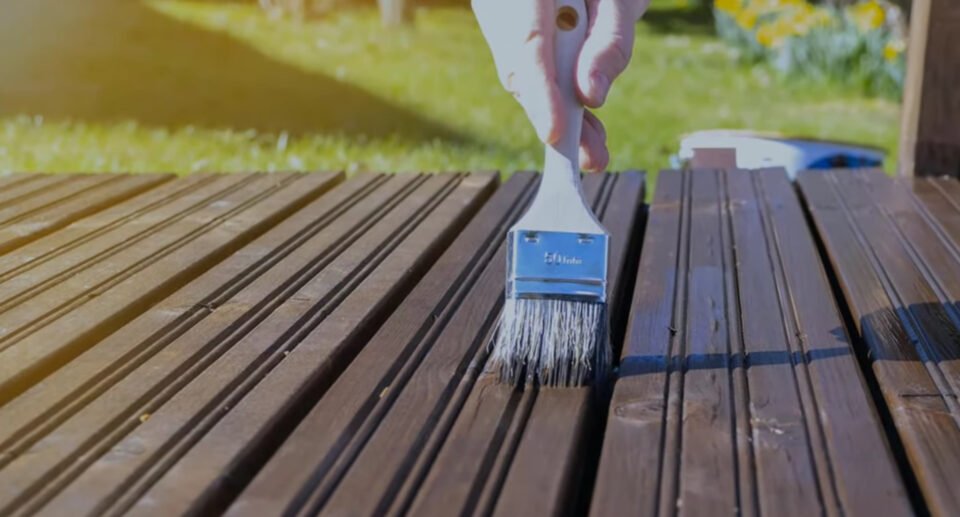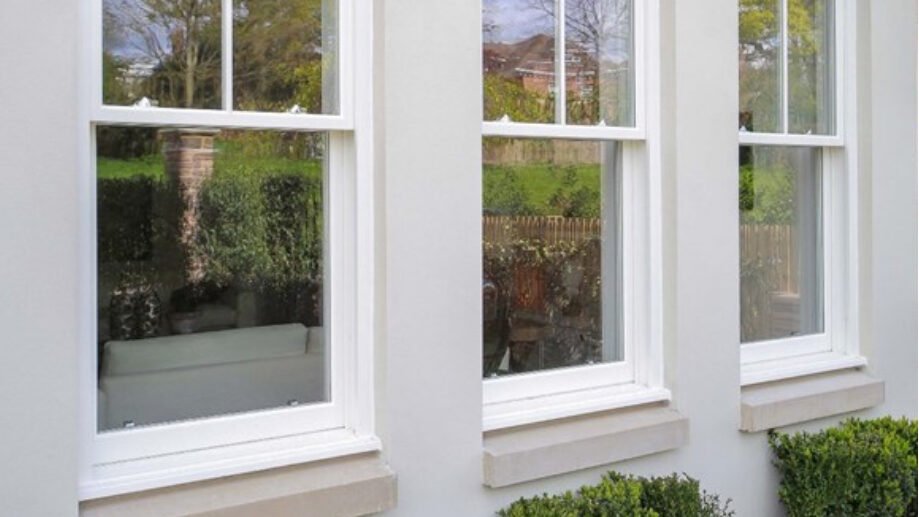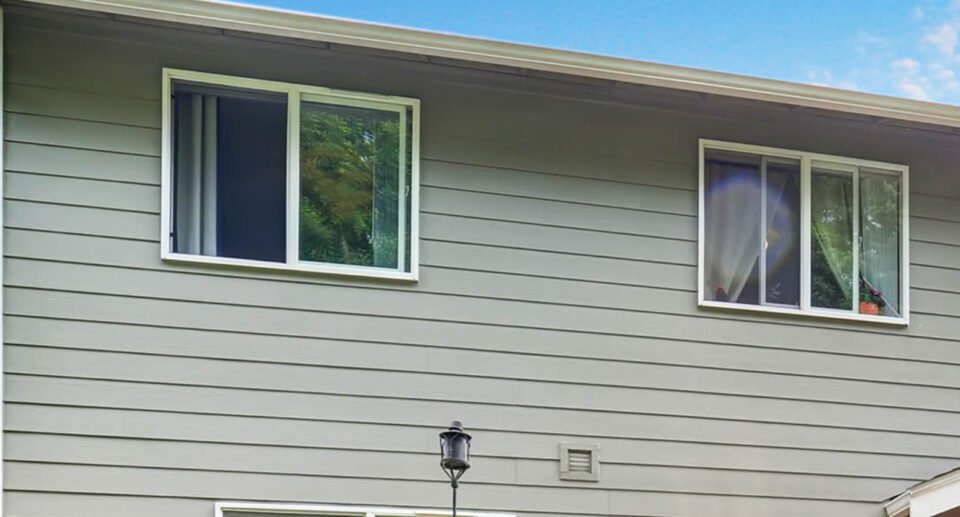Best Deck Paint: Top Performers and Buying Guide 2024

Selecting the right deck paint is a crucial decision for homeowners and DIY enthusiasts looking to enhance and protect their outdoor living spaces.
The market offers a variety of deck paints suitable for different purposes, climates, and wood types, each with unique features to consider.
From ensuring durability against the elements to providing a fresh and appealing look, the choice of deck paint can significantly impact the longevity and aesthetic of a deck.
With considerations ranging from weather resistance to ease of application, the best deck paint for your project will depend on the specific needs of your deck and the desired finish.
Some paints are formulated to provide a non-slip surface, while others are tailored to revive older wood or to offer advanced weatherproofing protection.
The decision process involves understanding the unique conditions your deck faces, examining product reviews for performance insights, and choosing a hue that complements the outdoor setting.
Key Takeaways
- Selection of deck paint affects both the durability and aesthetic appeal of a deck.
- Different paints are tailored for specific conditions, surfaces, and aesthetic desires.
- Proper application and maintenance are essential for extending the lifespan of a deck paint job.
Understanding Deck Paint
When choosing the right deck paint, homeowners should consider different paint types and the characteristics that indicate a paint’s quality and durability.
Types of Deck Paint
Water-Based Deck Paint: This type of paint is known for its quick drying time and ease of cleanup with soap and water. It has low odor and often a lower volatile organic compound (VOC) content, making it environmentally friendly. Most water-based deck paints are resistant to mold and mildew.
Oil-Based Deck Paint: Oil-based options require more time to dry but are celebrated for their rich finish and penetrating properties. These paints are often fortified with zinc particles to resist mildew and rot, boasting durability over time.
Acrylic Paint: A subset of water-based paints, acrylic deck paints offer flexibility and resistance to cracking and peeling. Their composition allows them to adhere well to most surfaces, including previously painted decks that have been properly primed.
Texture: Some deck paints include added texture to provide slip resistance. These are especially useful in areas that get wet frequently, adding safety and functionality to the aesthetics of a deck.
Key Features of Quality Deck Paint
- Durability: Quality deck paints should withstand the elements, resist fading, peeling, and cracking, and adhere strongly to the wood surface.
- UV Protection: They ought to offer UV protection to prevent the color from fading due to exposure to sunlight.
- Mold and Mildew Resistance: An important feature for deck paints is their ability to combat mold and mildew, which is vital for the longevity of the deck in damp climates.
- Finish: Options include solid colors, which can hide wood imperfections, or semi-transparent finishes that allow wood grain to show through.
Primer: Although some deck paints are self-priming, others require a separate primer to enhance adhesion and increase the paint’s lifespan.
Solid: Solid deck paints will offer a completely opaque finish, which can be beneficial for covering up older wood or inconsistencies in the wood’s appearance.
The selection of the appropriate type of deck paint and consideration of these key features can significantly impact the maintenance and lifespan of a deck.
It’s important for individuals to choose a deck paint that aligns with their specific needs and the condition of their deck.
Preparation and Application
For deck paints to adhere correctly and last, meticulous preparation of the surface and skilled application techniques are essential. Equally important is the set of tools that one prepared for the task at hand.
Surface Preparation
Wood: Begin with a thorough cleaning to remove all dirt and grime.
For wood decks, sanding is crucial to smooth the grain and remove any deteriorated fibers.
Pressure washers can accelerate the process but used with caution to not damage the wood.
For existing painted surfaces, old paint should be scraped off and the wood must be sanded before applying new paint.
Concrete: With concrete surfaces, ensure that they are clean and free from any previous coatings or sealers. Etching the concrete may be necessary to open up the pores before painting.
Metal: Metal surfaces should be sanded to remove any rust, followed by the use of a metal primer to prevent further corrosion.
Application Techniques
Sprayer: A sprayer can be an effective tool for applying deck paint evenly, particularly for large areas or intricately designed decks.
Make sure to cover all areas uniformly without over-applying.
Brush and Rollers: For more control, especially on stairs and tricky corners, brushes and rollers are preferred.
Brushes help to work the paint into the grain and are ideal for small areas and cutting in at edges.
Stairs and Vertical Surfaces: Applying paint on stairs and vertical surfaces requires precision. A thin coat using a smaller brush may help control dripping and ensure better coverage.
Necessary Tools for Application
- Pressure washer (for cleaning wood and concrete surfaces)
- Sanding tools (sandpaper, power sander)
- Paint sprayer (optional, for efficient application)
- Paintbrushes and rollers
- Paint tray
- Protective gear (gloves, eyewear)
Each of these tools serves a specific purpose, from initial cleaning to the final touches of paint application.
Having the right tools on hand is integral to achieving a waterproof, durable, and aesthetically pleasing deck paint job.
Choosing the Best Deck Paint
When selecting deck paint, it’s crucial to choose a product that not only refreshes the appearance of a deck but also provides a durable, long-lasting finish.
Suitable paint can protect a deck from foot traffic and weather, ensuring a beautiful and resilient surface.
Factors to Consider
Durability: A high-quality deck paint should provide a robust finish capable of withstanding heavy foot traffic and varying weather conditions.
Type of Paint:
- Water-based deck paint is known for its quick drying time and easy cleanup.
- Oil-based paint typically offers a stronger waterproof coating and could be preferable for decks exposed to constant moisture.
Finish: Choose between a low-luster finish, which is ideal for high-traffic areas and minimizes the appearance of imperfections, and a glossier finish that might show more wear and tear.
Coverage: Look for paints that offer excellent coverage, reducing the need for multiple coats.
Cost: While not the only factor, cost plays a significant role in determining the value offered by the deck paint over time.
Top-rated Deck Paint Reviews
- TotalBoat TotalTread Non-Skid Deck Paint
- Type: Water-based
- Durability: High
- Ideal for: Decks where skid resistance is a priority.
- INSL-X Sure Step Acrylic Anti-Slip Coating
- Type: Acrylic
- Durability: Strong, with anti-slip properties
- Cost: Good value for the level of durability
- Montage Signature Eco-Friendly Paint
- Type: Acrylic
- Durability: Ideally suited for both indoor and outdoor use
- Eco-Friendly: Yes
- KILZ Enamel Floor Paint
- Type: Latex-based enamel
- Durability: Extremely durable, resists fading, peeling, and cracking
- Best for: Old wooden decks needing rejuvenation
- Rust-Oleum Marine Topside Paint
- Type: Oil-based
- Durability: Longest lasting for waterfront decks
- Coverage: Excellent for weathered wood surfaces
Specialized Deck Paints
When selecting deck paints, specific features such as safety and environmental impact are crucial. This section explores paints designed with special functions in mind, such as anti-slip properties and environmental friendliness.
Anti-slip Deck Paints
Anti-slip paints increase the safety of deck surfaces, providing secure footing even when wet.
Products like INSL-X Sure Step Acrylic Anti-Slip Coating offer a durable, skid-resistant finish suitable for pool decks and other high-moisture areas.
TotalBoat TotalTread Non-Skid Deck Paint is another excellent choice, with unique non-skid particles that can be customized to achieve desired textures.
These paints typically contain additives that create a textured surface to prevent slipping.
Eco-Friendly Options
For environmentally conscious consumers, eco-friendly deck paints are a responsible choice.
They are often water-based, containing low or zero VOCs and may be biodegradable.
One can consider Montage Signature Eco-Friendly Paint, praised not only for its eco credentials but also for its versatility and durability on both interior and exterior surfaces.
These paints minimize environmental impact while still providing a robust finish for deck protection.
Maintenance and Durability
Choosing the right deck paint is crucial for both maintaining the appearance of your deck and ensuring its longevity.
The paint must offer protection against the elements while preserving the deck material.
Weather and Climate Considerations
When selecting a deck paint, one must account for local weather and climate conditions. These factors greatly influence the performance and durability of the product.
For instance:
- Outdoor Temperature: Deck paints should withstand temperature extremes from sweltering summers to freezing winters.
- UV Damage: Products with UV inhibitors are vital in sunny areas to prevent color fading and wood degradation.
- Inclement Weather: Paint that is waterproof and resistant to mildew and mold ensures that the deck stays in good condition, even in rainy or humid climates.
Protection and Longevity
The longevity of the paint and the protection it offers to the deck material are paramount. Key features include:
- Protective Layer: A high-quality deck paint provides a robust protective layer that resists splinters, peeling, and cracking.
- Stain and Mildew Resistance: Paint formulated to repel stains, as well as resist mold and mildew growth, is essential for decks exposed to moisture and organic debris.
- Waterproofing: A fully waterproof composition prevents water damage and decay, contributing substantially to the deck’s lifespan.
Aesthetic Considerations
When selecting deck paint, aesthetics play a significant role in creating a welcoming outdoor space.
It’s essential to choose a color and finish that not only complements the home and its surroundings but also meets the functional needs of the deck area.
Color and Finish Options
Deck paint comes in a variety of colors and finishes, each able to set a specific mood or match the existing décor.
Common finish types include low-sheen, satin, semi-gloss, eggshell, and high-gloss, each offering a different level of shine and visual impact.
For example:
- Low-sheen or eggshell finishes provide a subtle, soft appearance that hides imperfections well.
- Satin finishes strike a balance, offering a moderate sheen that’s easier to clean than matte finishes but without the glare of higher gloss options.
- Semi-gloss and high-gloss paints are reflective and durable, often used for their ease of cleaning and resistance to scuffing.
The color palette can include earthy tones such as sage or desert sand, which blend seamlessly into natural landscapes.
On the more practical side, transparent finishes can showcase the natural grain of the wood without adding color.
Textures and Patterns
Beyond color and finish, texture adds a functional element to deck paints.
Anti-slip paint is designed with safety in mind, providing traction even when the surface is wet. This is particularly beneficial around pool decks or in regions with frequent rain.
Textured paint can also be used to create patterns that add visual interest or define different areas on the deck.
Here’s a brief breakdown of texture considerations:
- Anti-slip paint: Incorporates fine granules to reduce slips and falls.
- Textured patterns: Can be used to highlight seating areas or pathways.
While aesthetics are a priority, ensuring that chosen paints are suitably durable for the chosen application is critical for long-term satisfaction with the deck’s appearance.
Deck Paint for Different Surfaces
Choosing the right type of paint for various deck surfaces is crucial to ensure longevity and durability.
Different materials require specific paint formulations to adhere properly and withstand the elements.
Wood Surfaces
For wood decks, a 100 percent acrylic paint is often recommended, as it resists fading and can handle the expansion and contraction of wood throughout the seasons.
The type of wood also matters; softer woods benefit from more flexible coatings whereas harder woods might need tougher paints that prevent scratching and marring.
Concrete and Masonry
Concrete surfaces and masonry are prone to moisture and therefore need a paint that can seal against water penetration.
A high-quality acrylic paint with a non-slip finish is ideal, not only to protect the surface but also to ensure safety for those walking on it.
Metal and Other Surfaces
Metal surfaces, including railings and hardware, should be coated with paint that contains anti-rust properties to prevent corrosion.
For surfaces like fiberglass or composite decking, a paint specifically designed for synthetic materials is required to ensure that the paint adheres correctly and lasts as long as possible.
Brand and Product Highlights
When selecting deck paint, the choice often comes down to the product features that best fit the consumer’s needs, from weather resistance to eco-friendliness. This section highlights various brands and their standout deck paint products.
Behr Deck Paints
BEHR Premium Advanced DeckOver: This innovative product from Behr is formulated to revitalize and resurface old wood and concrete. It conceals splinters and cracks up to 1/4-inch and is designed to provide a slip-resistant finish, which is ideal for decks that see a lot of foot traffic.
Kilz Deck Solutions
KILZ Interior/Exterior Latex Floor Paint: Known for its durability, this floor paint by Kilz is a prime choice for both interior and exterior surfaces. It resists scuffing, fading, cracking, and peeling, making it a strong option for weathered decks needing a refresh.
Rust-Oleum Innovations
Rust-Oleum Marine Topside Paint: This Rust-Oleum product is made for marine environments but is equally adept for use on decks. Its UV resistance ensures the color does not fade easily.
Rust-Oleum RockSolid 20X Deck Resurfacer: Designed for heavily worn decks, this solution is 20 times thicker than standard paint. It not only refinishes the deck surface but also protects against weather and UV damage.
Other Notable Brands
Benjamin Moore & Sherwin-Williams: Both of these brands offer a range of deck paints known for their quality and sustainability. The particular products from these brands did not stand out in the aggregated search results, but they are established companies with reputable lines of exterior paints suitable for decking.
INSL-X: As evidenced in the search results, INSL-X products, such as their Acrylic Anti-Slip Coating Paint, are recognized for their safety features, making them a choice for pool decks and similar surfaces.
Additional Deck Enhancements
Painting is just one way to enhance a deck; incorporating sealants and adding select accessories can further improve durability and aesthetics.
Sealants and Topcoats
To protect a deck from the elements, sealants and topcoats are critical.
They offer a layer of protection against moisture, UV rays, and wear.
For patios and porches, a high-quality sealant can extend the life of the surface significantly.
Sealants commonly come in a variety of finishes, including clear and tinted, and can bolster slip-resistant qualities.
Topcoats may serve as an additional shield for painted surfaces, ensuring greater longevity and maintaining visual appeal without compromising on versatility.
They can also enhance the anti-slip protection, especially in high-traffic areas such as volleyball courts or decks with benches and other furniture.
Deck Accessories and Decor
Enhancing a deck involves more than just surface treatments. The inclusion of accessories and decor plays a pivotal role in functionality and style.
Here’s an outline of factors to consider:
- Railing: Important for safety and can be designed to match the deck’s aesthetic. Materials vary, but should always include durable and weather-resistant options.
- Benches and Furniture: These should be chosen not only for style but also for their long-lasting materials and construction.
- Accessories: From planters to lighting, each additional element should complement the deck’s style and offer practical benefits, like increased visibility or slip-resistant surfaces.
When selecting accessories, one should consider pieces that echo the tones found in both the stained or painted deck surface and the surrounding landscape, such as the soft tones of sage.
Frequently Asked Questions
Choosing the right deck paint is pivotal for both aesthetics and longevity. Selecting the appropriate product can affect the durability of the deck surface, resistance to weather, and ease of maintenance.
What type of paint is best for a weather-resistant deck finish?
For a weather-resistant deck finish, acrylic paints, also known as water-based paints, are highly recommended. They offer excellent durability and resistance to fading, cracking, and peeling.
Which deck paint colors are most durable and popular?
Darker colors tend to be more durable as they are better at hiding signs of wear. Popular durable colors include various shades of gray, blue, and earth tones.
What are the recommended paints for rejuvenating an old deck?
High-quality, restorative paints with fillers and elastomeric qualities are best suited for rejuvenating an old deck. They can fill in minor cracks and provide a refreshed finish.
How do I choose the best deck paint for pressure-treated wood?
For pressure-treated wood, it is essential to use a deck paint that’s specifically formulated to adhere to surfaces with prior treatment. Products with excellent adhesion properties and flexibility to expand and contract with the wood are ideal.
What deck paints are best for high-traffic areas with pets?
Deck paints with a low-luster enamel surface formulated to resist scuffing are suitable for high-traffic areas with pets. These paints are also less slippery, promoting safety.
Which application method provides the most enduring finish on a deck?
Using a brush or roller is often considered the best application method for an enduring finish on a deck. These methods ensure a thorough and even coverage that penetrates the wood for optimal protection.

Hello, I’m Keith Jones. I’m the author and head of content here of door and window guide. I’ve been in the window and door industry for over 10 years in the UK and North America. I’ve had quite a few roles during my career mainly in Worldwide sales. I’m now semi retired so I thought I’d put my knowledge to good use educating people about all they might need to know about door and window related topics.






